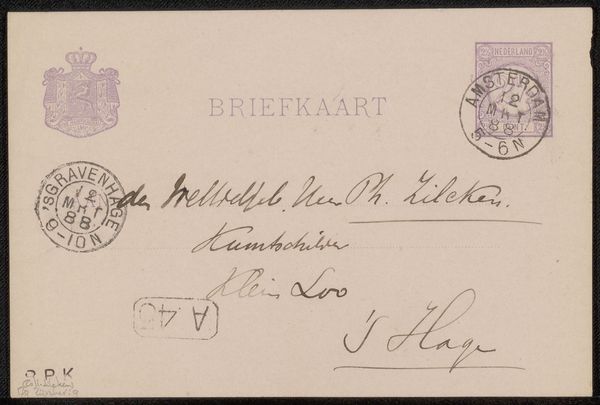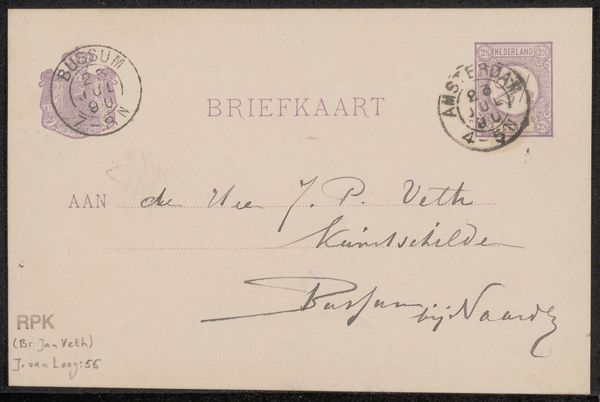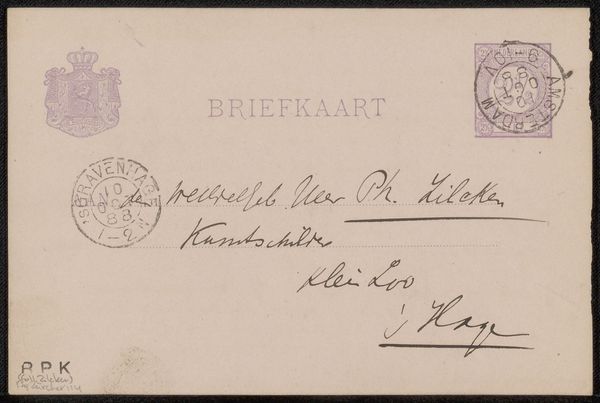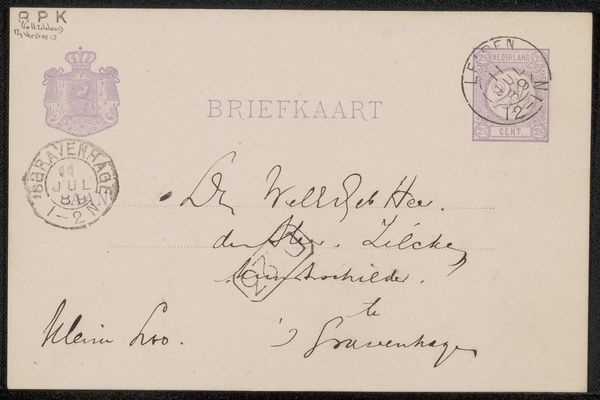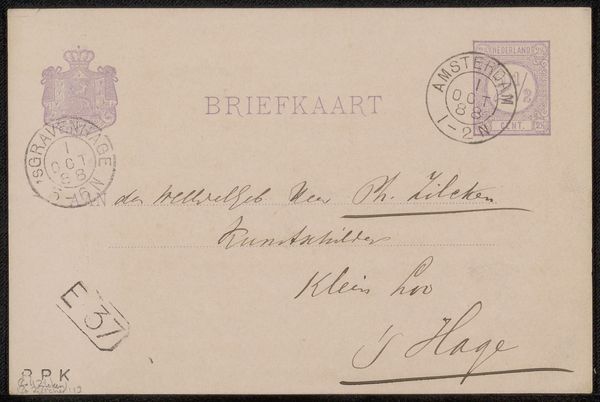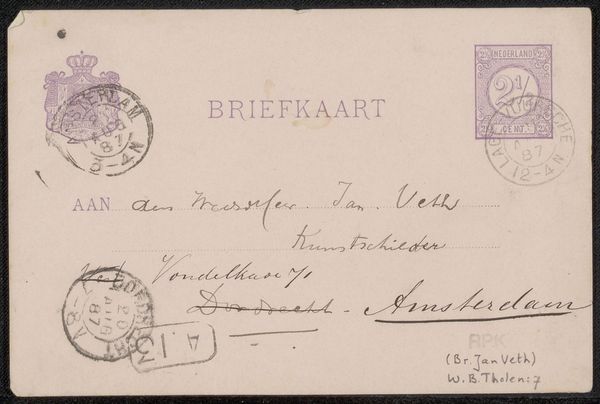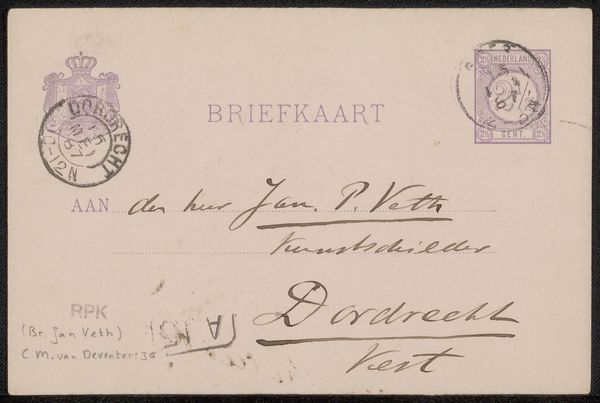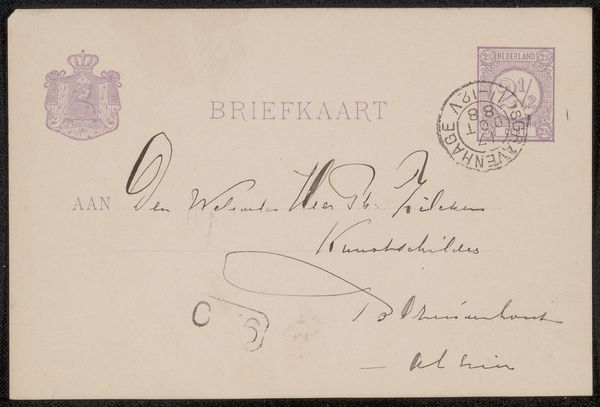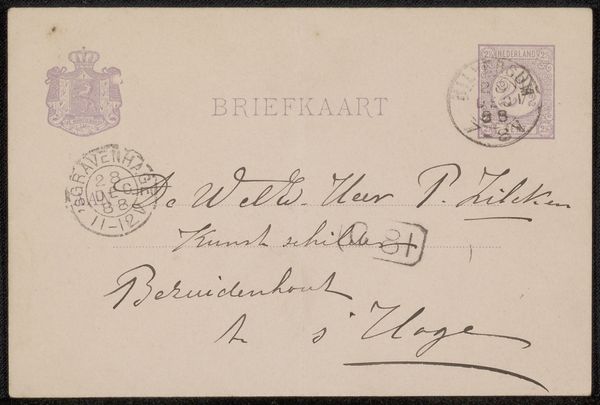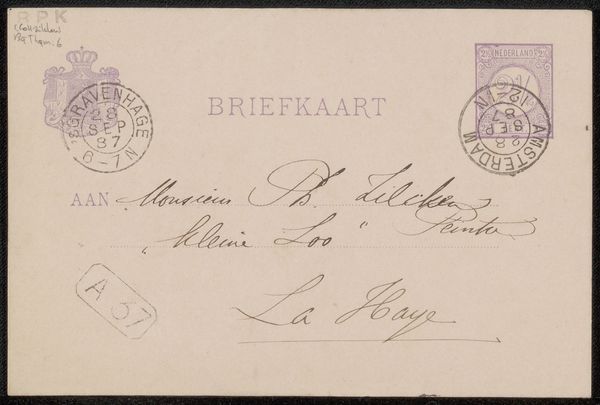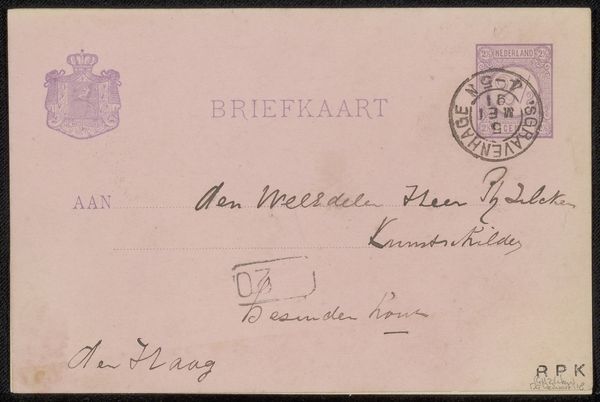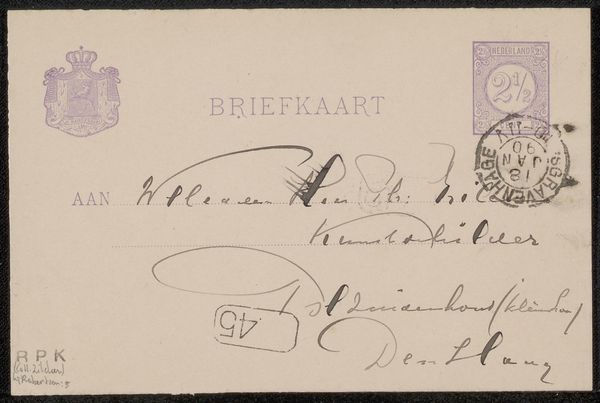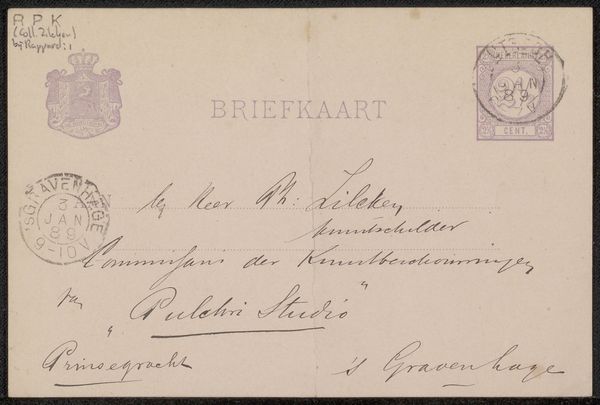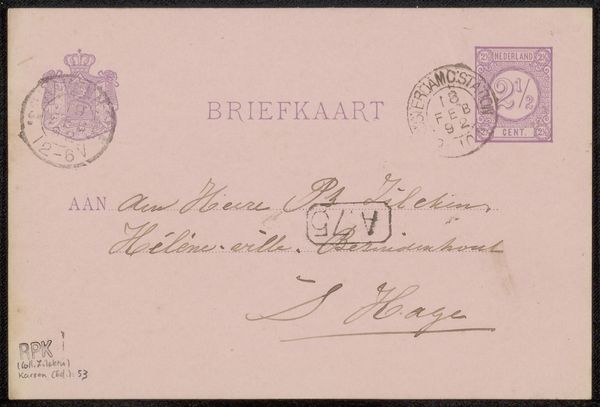
drawing, paper, ink, pen
#
drawing
#
comic strip sketch
#
pen illustration
#
pen sketch
#
paper
#
personal sketchbook
#
ink
#
ink drawing experimentation
#
pen-ink sketch
#
pen work
#
sketchbook drawing
#
pen
#
storyboard and sketchbook work
#
sketchbook art
#
calligraphy
Copyright: Rijks Museum: Open Domain
Curator: Here we have a fascinating little drawing, a postcard actually, titled "Briefkaart aan Philip Zilcken." It’s attributed to Jan Zürcher and dates possibly from 1887. The piece, created using ink and pen on paper, presents a window into late 19th-century artistic correspondence. Editor: It feels so delicate. The sepia tones and elegant script lend it a melancholic air, almost a whispered message across time. What symbols or visual cues strike you as particularly significant here? Curator: Well, as a physical object circulating within artistic circles, this postcard reveals networks of influence. Zilcken was a painter, so this speaks to the dialogue of the time. Its form, though simple, reflects evolving notions of artistic community, and the increasing role of correspondence within the creative class. The choice of sending a "briefkaart" was cheaper, but more exposed to outside eyes than letters. Editor: Yes, but looking beyond the pure functionality of the piece, consider the use of the Hague coat-of-arms within the postage stamp, along with Amsterdam franking, a sign of state patronage and the official channels art often had to navigate. It lends an odd layer of bureaucratic legitimacy. What's your take on this blend of personal expression within the formal structure? Curator: I see that tension as intrinsic to art's position in society then—a balance between individual artistic freedom and dependence on cultural institutions. Think about how artists' livelihoods were often tied to state-sponsored exhibitions, like the Amsterdam F.T.S that put another mark onto the card! Even a casual correspondence like this embodies that relationship. Editor: Indeed! Also, the handwriting. Beyond its legibility, look at its looping quality; this wasn’t merely a vehicle for words. Curator: Precisely. Its material nature carries significant weight, echoing not only Jan Zürcher artistic ideas but also, more broadly, what defined cultural institutions during the late 19th century. It serves almost like a cultural mirror. Editor: What an interesting snapshot in time! This little card provides more than postal service it tells us the socio-artistic background for artists of the day.
Comments
No comments
Be the first to comment and join the conversation on the ultimate creative platform.
